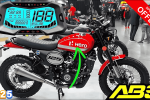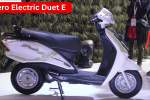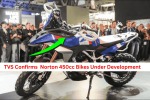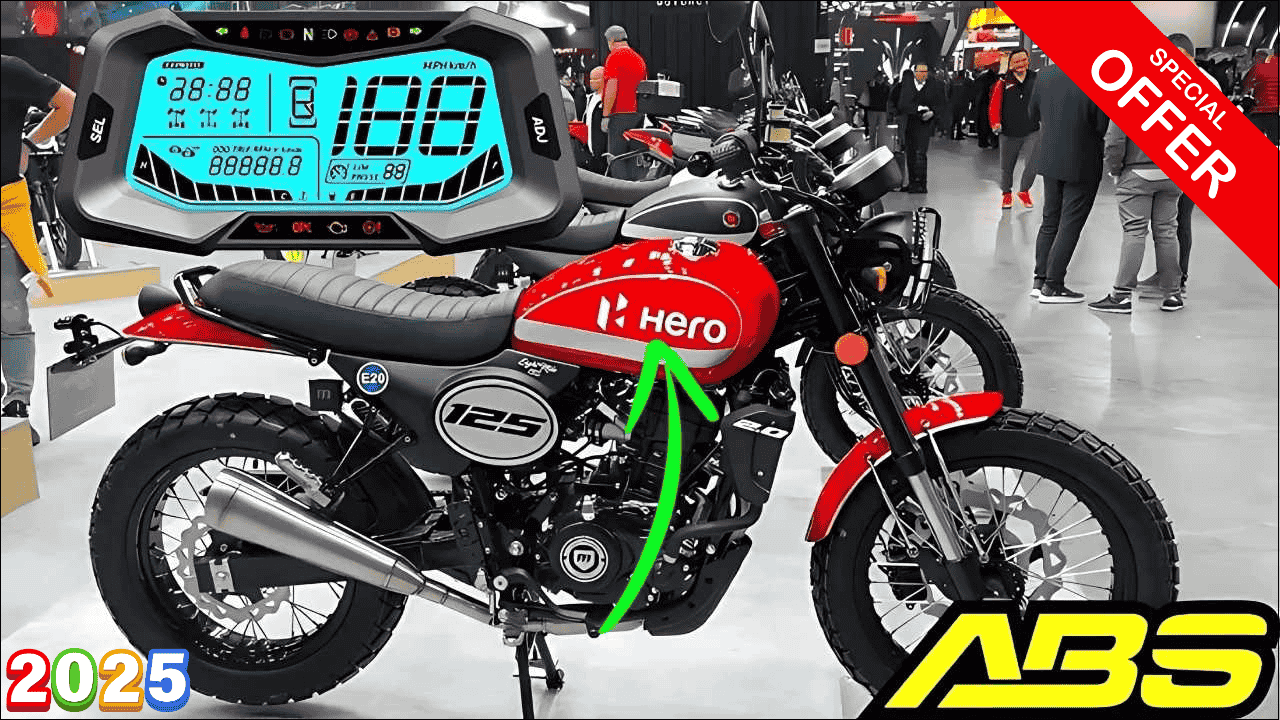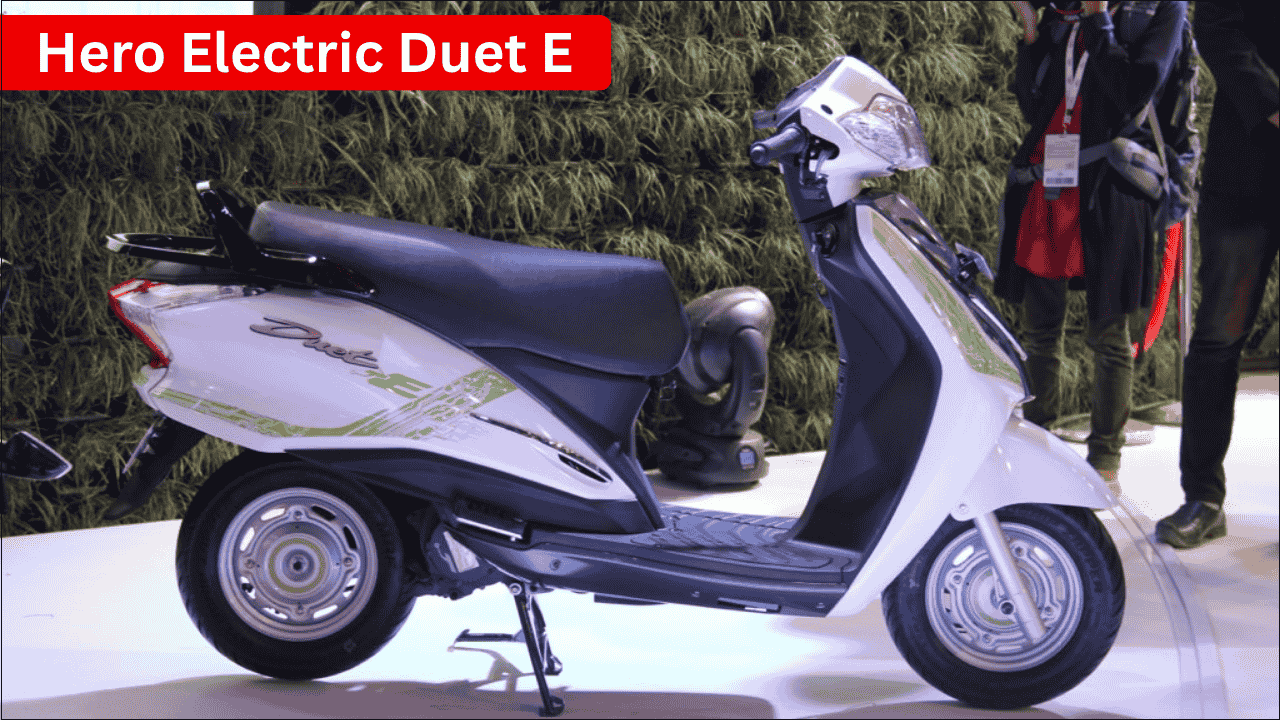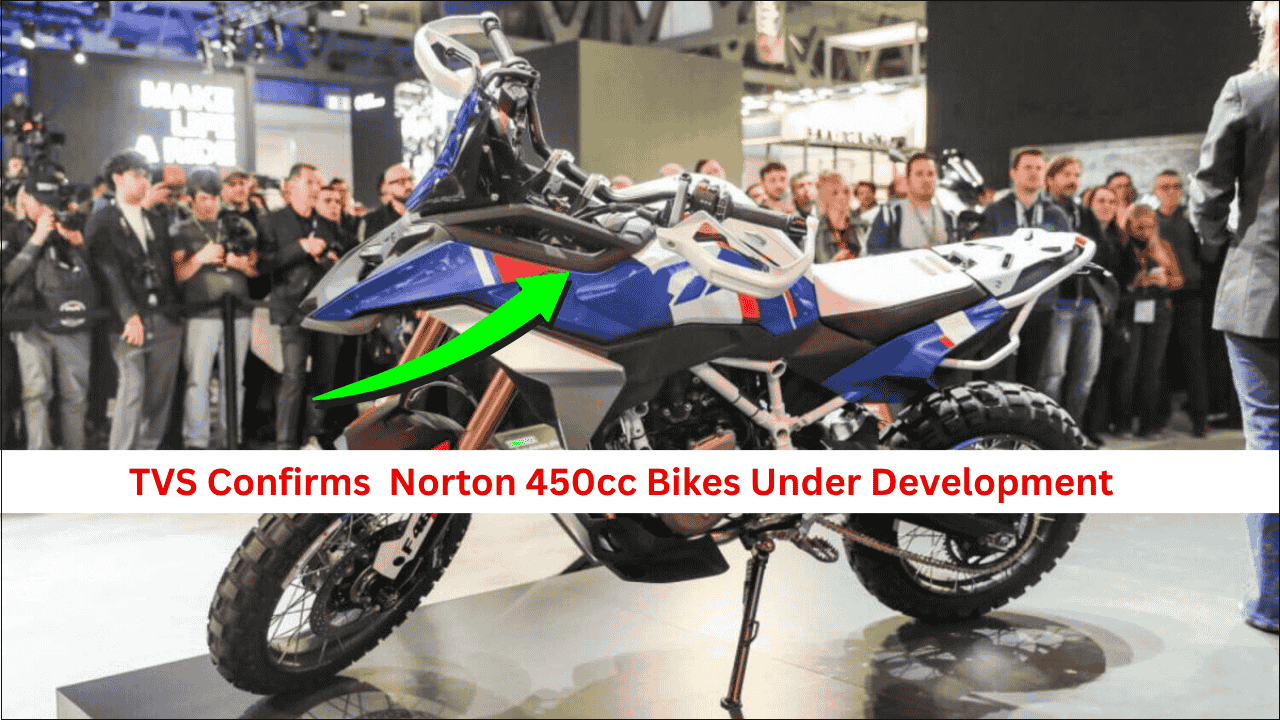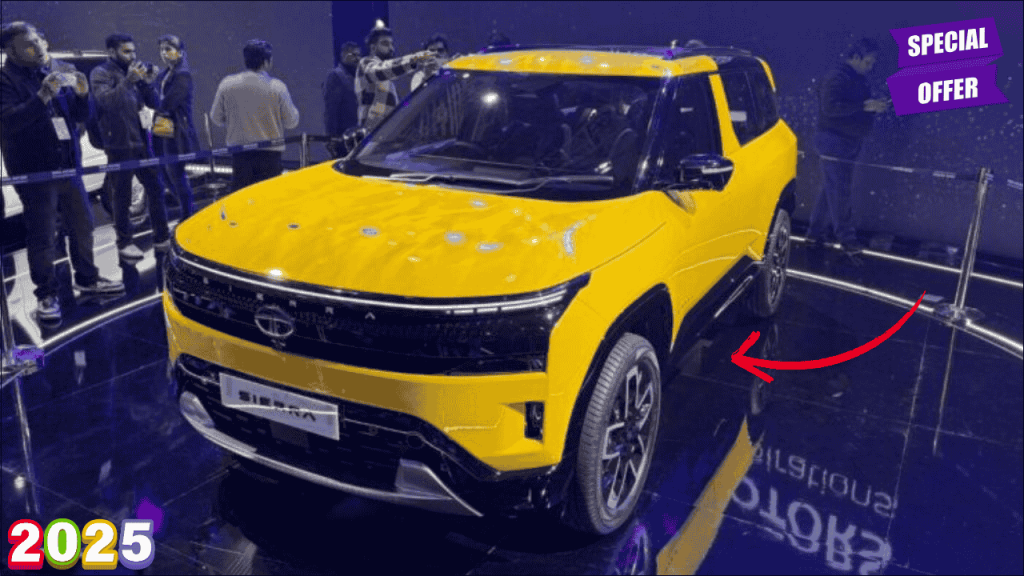
Tata Motors is preparing to revive one of its most iconic nameplates with the highly anticipated Sierra, marking a significant milestone in the company’s electric vehicle expansion strategy. The all-new Sierra EV is expected to launch before its internal combustion engine counterpart, showcasing Tata’s commitment to electric mobility leadership in India.
The production-ready Sierra was recently showcased at the BMGE 2025 exhibition in New Delhi, generating considerable excitement among automotive enthusiasts and industry experts alike.
This launch strategy represents Tata’s evolved approach to vehicle development, prioritizing electric variants to align with India’s growing sustainable mobility demands and government initiatives promoting clean transportation.
The Sierra nameplate carries significant emotional value for Indian automotive enthusiasts, and its electric revival demonstrates how legacy brands can be reimagined for the modern era.
Table of Contents
Design Evolution and Modern Interpretation
The new-generation Sierra maintains the distinctive design DNA of its predecessor while incorporating contemporary styling elements that appeal to modern SUV buyers. The signature floating roofline concept has been enhanced with a panoramic sunroof that creates an impressive visual continuity.
Bold character lines and muscular wheel arches give the Sierra a commanding road presence that distinguishes it from other SUVs in Tata’s current lineup. The design language balances nostalgic elements with futuristic aesthetics.
The blacked-out roof treatment creates a striking two-tone appearance that emphasizes the vehicle’s premium positioning in Tata’s SUV portfolio. This design choice also helps reduce visual weight and enhances the floating roof effect.
Large alloy wheels and pronounced shoulder lines contribute to the Sierra’s assertive stance, while LED lighting elements provide modern functionality and visual appeal.
Electric Powertrain and Performance Specifications
The Sierra EV is expected to offer dual battery pack options, providing flexibility for different customer needs and budgets. The larger battery configuration is anticipated to deliver over 500 kilometers of range on a single charge.
Advanced charging capabilities including DC fast charging will enable rapid replenishment of the battery pack, making long-distance travel practical and convenient for users.
Vehicle-to-Load (V2L) and Vehicle-to-Vehicle (V2V) capabilities will position the Sierra EV as more than just transportation, enabling it to serve as a mobile power source for various applications.
The electric powertrain is expected to deliver instant torque and smooth acceleration characteristics typical of modern electric vehicles, providing a refined driving experience.
Expected Specifications Comparison
| Variant | Sierra EV | Sierra ICE (Expected) |
|---|---|---|
| Powertrain | Electric motor(s) | 1.5L turbo petrol / 2.0L diesel |
| Power Output | TBD | 168 PS / 170 PS |
| Torque | TBD | 280 Nm / 350 Nm |
| Range/Efficiency | 500+ km | TBD |
| Transmission | Single-speed | 6MT/6AT/7DCT |
| Charging | DC fast charging | N/A |
| Special Features | V2L, V2V capability | Traditional features |
Advanced Technology Integration
The Sierra is expected to debut Tata’s first triple-screen layout, featuring a large touchscreen infotainment system, fully digital instrument cluster, and dedicated passenger display. This configuration will establish new benchmarks for in-cabin technology.
Connectivity features will include smartphone integration, over-the-air updates, and advanced navigation systems optimized for electric vehicle usage, including charging station location and route planning.
The infotainment system is likely to incorporate Tata’s latest software platform with enhanced user interface design and improved response times compared to current offerings.
Voice command functionality and gesture controls may be included to provide intuitive interaction methods while maintaining focus on road safety.
Comfort and Convenience Features
| Feature Category | Expected Equipment | Benefit |
|---|---|---|
| Climate Control | Automatic dual-zone | Enhanced comfort |
| Seating | Ventilated front seats | Premium experience |
| Charging | Wireless charging pad | Convenience |
| Audio | Premium sound system | Entertainment |
| Safety | Multiple airbags, ADAS | Enhanced protection |
| Lighting | LED headlamps, DRL | Better visibility |
| Roof | Panoramic sunroof | Airy cabin feel |
ICE Variant Engine Options
The internal combustion engine variant will likely feature Tata’s new 1.5-liter turbocharged petrol engine producing 168 PS and 280 Nm of torque, providing strong performance for highway and city driving.
A familiar 2.0-liter diesel engine option is expected to deliver 170 PS and 350 Nm of torque, catering to customers preferring diesel efficiency and torque characteristics.
Multiple transmission options including 6-speed manual, 6-speed automatic, and 7-speed dual-clutch transmissions will provide choices for different driving preferences and usage patterns.
The ICE variants will appeal to customers in regions with limited charging infrastructure or those preferring traditional powertrains for long-distance travel requirements.
Market Positioning and Pricing Strategy
The Sierra EV will compete in the premium electric SUV segment, positioning itself against established players while leveraging Tata’s growing reputation in electric vehicle manufacturing.
Pricing is expected to be competitive within the electric SUV category, potentially starting around ₹25-30 lakh for the base variant, making it accessible to a broader customer base.
The ICE variants may be priced more affordably, providing entry-level access to the Sierra nameplate while electric variants target early adopters and environmentally conscious buyers.
Government incentives and subsidies for electric vehicles will help reduce the effective purchase price, improving the value proposition for potential customers.
Production Timeline and Availability
Launch timeline indicates the Sierra EV will arrive before the end of the current financial year, followed by ICE variants in subsequent months to complete the lineup.
Initial production will likely focus on major metropolitan markets where charging infrastructure is more developed and customer awareness of electric vehicles is higher.
Gradual rollout to tier-2 and tier-3 cities will follow as charging networks expand and customer acceptance grows in these markets.
Tata’s established manufacturing capabilities and supply chain relationships will support efficient production scaling to meet anticipated demand levels.
Competition and Market Impact
The Sierra EV will compete directly with other premium electric SUVs including the MG ZS EV, Hyundai Kona Electric, and upcoming models from various manufacturers entering the Indian market.
Its unique positioning as a revived iconic nameplate with modern electric technology creates a distinctive market appeal that competitors may find difficult to replicate.
The combination of heritage value, modern technology, and competitive pricing could establish the Sierra as a significant player in India’s expanding electric SUV segment.
Success of the Sierra could encourage other manufacturers to revive their own iconic nameplates with electric powertrains, potentially reshaping the Indian automotive landscape.
Future Expansion Plans
Tata Motors has announced plans to launch 30 new models by 2030, with significant focus on electric vehicle variants across different segments and price points.
The Sierra’s success will likely influence development of additional electric SUV variants and potentially inspire electric versions of other iconic Tata nameplates.
International market expansion may be considered based on domestic market reception and the company’s global electric vehicle strategy development.
Continuous technology upgrades and feature enhancements will keep the Sierra competitive throughout its product lifecycle in the rapidly evolving electric vehicle market.
Frequently Asked Questions
Q: When will the Tata Sierra EV be available for purchase?
The Sierra EV is expected to launch before the end of the current financial year, with bookings likely to commence a few months prior to the official launch date.
Q: What will be the expected range of the Sierra EV?
The Sierra EV is anticipated to offer over 500 kilometers of range on a single charge with the larger battery pack option, making it suitable for long-distance travel.
Q: Will the Sierra EV support fast charging?
Yes, the Sierra EV is expected to feature DC fast charging capability along with V2L and V2V features for enhanced utility and convenience.
Q: How will the Sierra EV be priced compared to competitors?
While official pricing hasn’t been announced, the Sierra EV is expected to be competitively priced in the ₹25-30 lakh range, positioning it strategically against other premium electric SUVs.
